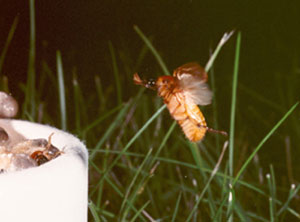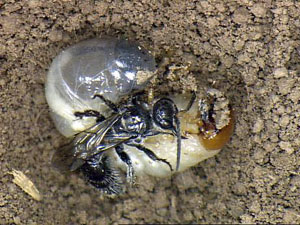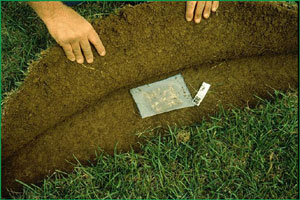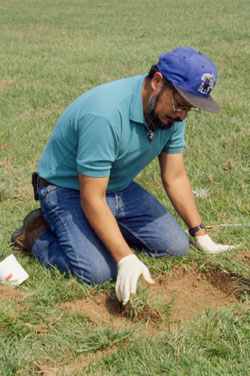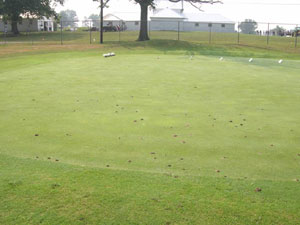 | Ants, especially Lasius neoniger, are beneficial predators but become pests when their mound-building occurs on closely-mowed golf putting greens. |
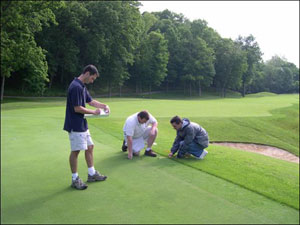 | Graduate students survey ant mound and nest distribution at Valhalla Golf Course, site of the PGA Championship. This study showed that ant mounds on sand-based greens encroach from, and are connected to, main nests located in natural soil just outside the perimeter. This helps superintendents to reduce insecticide usage by focusing control efforts where the nests are located, rather than treating the whole green. |
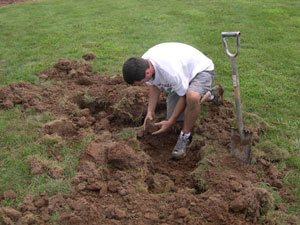 | Reid Maier (MS, 2005) excavates an ant nest to clarify when queens will emerge to found new colonies. |
| Black cutworm feeding causes pock-marks on golf course putting greens. Large amounts of insecticide are applied to control this pest.
| 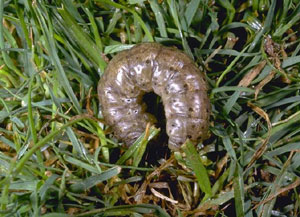 |
| R. Chris Williamson (PhD, 1996) discovered that black cutworms lay the eggs on the tips of grass blades, and that mowing removes most of those eggs. Many eggs survive on grass clippings, so remote disposal of clippings helps reduce re-infestations. | 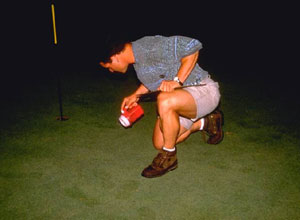 |
| Night research on golf courses showed that black cutworms can crawl surprisingly long distances. Tape shows track of a black cutworm (inset) that crawled from surrounding areas onto a putting green. Managing the reservoir population helps reduce human exposure to pesticides on greens.
| 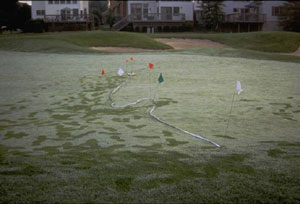 |
| Newly-hatched black cutworms reject a genetically modified perennial ryegrass containing a symbiotic fungus (endophyte) that produces a potent blend of defensive alkaloids. Use of pest-resistant turfgrasses can reduce the need for chemical inputs. | 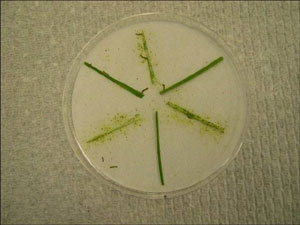 |
| Callie Prater (MS, 2005) discovered a new baculovirus decimating black cutworm populations in turfgrass. She isolated, identified, and amplified the virus, then evaluated it in laboratory and field studies for biological control. This was the first research to manipulate a baculovirus for managing a turfgrass insect pest. | 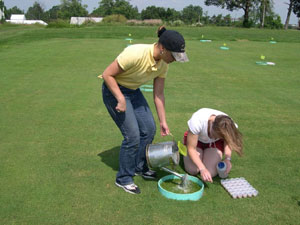 |
| Graduate student Callie Prater describes her work on bio-control of cutworms at the University of Kentucky Turfgrass Field Day. | 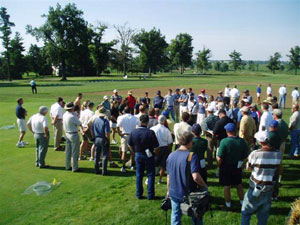 |


















